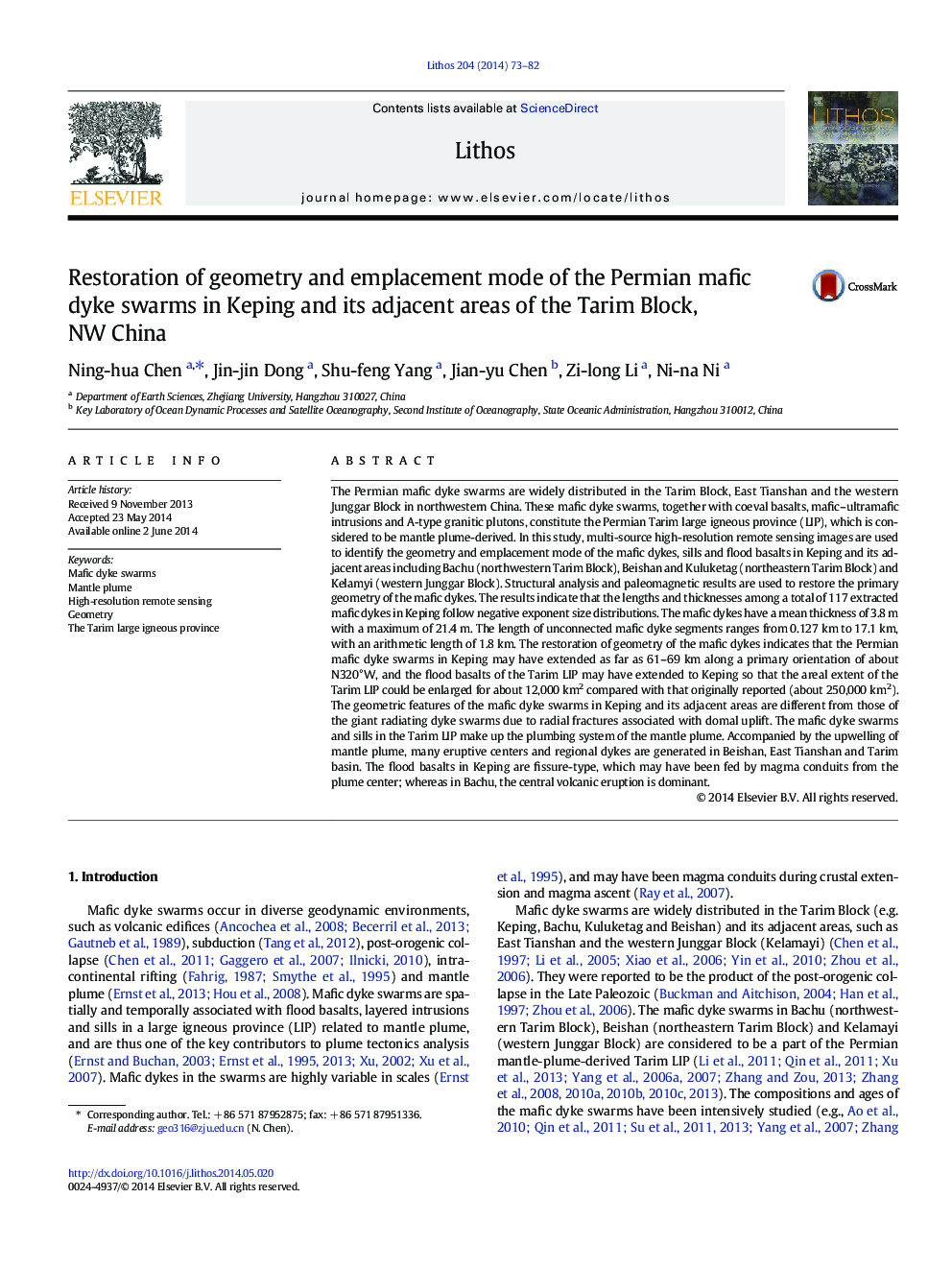| Article ID | Journal | Published Year | Pages | File Type |
|---|---|---|---|---|
| 4715852 | Lithos | 2014 | 10 Pages |
•We extract the geometric features of Keping dykes in the Permian Tarim LIP.•Dykes, sills and flood basalts are distinguished based on satellite images.•The dyke geometry is restored based on structural analysis and paleomagnetic data.•Dykes, sills and flood basalts constitute the plumbing system of Tarim LIP.•Keping lies in the edge of eruptions and experienced fissure eruptions.
The Permian mafic dyke swarms are widely distributed in the Tarim Block, East Tianshan and the western Junggar Block in northwestern China. These mafic dyke swarms, together with coeval basalts, mafic–ultramafic intrusions and A-type granitic plutons, constitute the Permian Tarim large igneous province (LIP), which is considered to be mantle plume-derived. In this study, multi-source high-resolution remote sensing images are used to identify the geometry and emplacement mode of the mafic dykes, sills and flood basalts in Keping and its adjacent areas including Bachu (northwestern Tarim Block), Beishan and Kuluketag (northeastern Tarim Block) and Kelamyi (western Junggar Block). Structural analysis and paleomagnetic results are used to restore the primary geometry of the mafic dykes. The results indicate that the lengths and thicknesses among a total of 117 extracted mafic dykes in Keping follow negative exponent size distributions. The mafic dykes have a mean thickness of 3.8 m with a maximum of 21.4 m. The length of unconnected mafic dyke segments ranges from 0.127 km to 17.1 km, with an arithmetic length of 1.8 km. The restoration of geometry of the mafic dykes indicates that the Permian mafic dyke swarms in Keping may have extended as far as 61–69 km along a primary orientation of about N320°W, and the flood basalts of the Tarim LIP may have extended to Keping so that the areal extent of the Tarim LIP could be enlarged for about 12,000 km2 compared with that originally reported (about 250,000 km2). The geometric features of the mafic dyke swarms in Keping and its adjacent areas are different from those of the giant radiating dyke swarms due to radial fractures associated with domal uplift. The mafic dyke swarms and sills in the Tarim LIP make up the plumbing system of the mantle plume. Accompanied by the upwelling of mantle plume, many eruptive centers and regional dykes are generated in Beishan, East Tianshan and Tarim basin. The flood basalts in Keping are fissure-type, which may have been fed by magma conduits from the plume center; whereas in Bachu, the central volcanic eruption is dominant.
